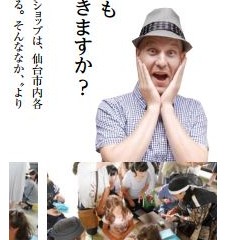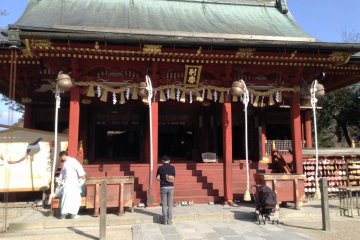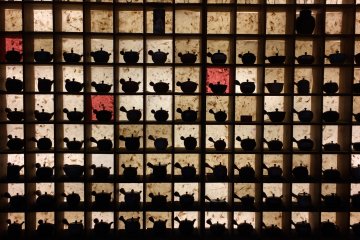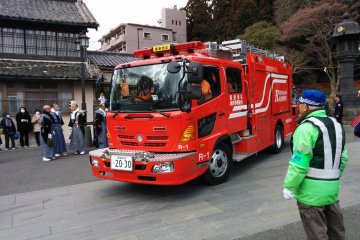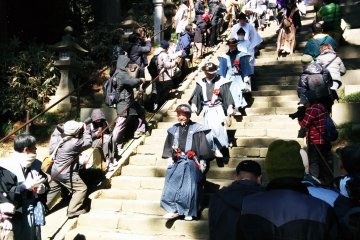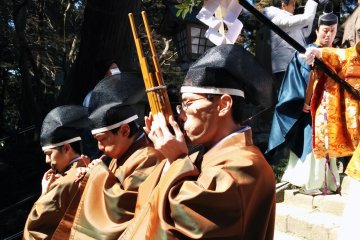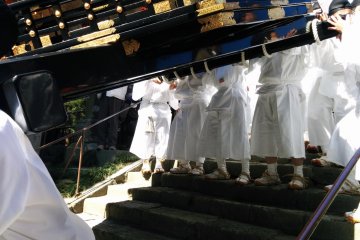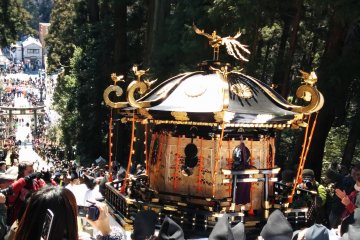The Shiogama Hote, or Fire Prevention Festival takes place in the city of Shiogama, just outside the metropolis of Sendai each year on March 10th. Like several other annual festivals in the city, festivities kickoff at Shiogama Shrine, one of the most important shrines in the Tohoku region.
Origins of the Festival
The origins of this festival goes back a few hundred years, a time when a fire could easily destroy a whole city with no resistance from building design or modern firefighting equipment. With such a dire threat and relatively few countermeasures, the local people felt it best to turn to their local deities for protection. The event continues to this day and still draws crowds and a huge number of participants.

What exactly is the Hote Festival and what will you see when you go? In addition to a fire prevention festival, the festival does double duty by encouraging prosperity in the town. Note this is a fire prevention festival, so you won't see pyrotechnic flames nor fear for your life like you might in the fire festival of Tejikara. The main and almost only attraction is a procession through town of hundreds of locals affiliated with the shrine. All are wearing traditional Shinto whites, and a few are in more colorful, though still period clothing. The highlight of the festival is surely the mikoshi or portable shrine being carried around the streets. A shrine is considered the resting area of one or more enshrined deities.
During the Festival
During festivals, the spirit of a deity will be welcomed into a portable shrine then paraded around town. This is for the purpose of having the deity bless the town, give a chance for elderly people that may not be able to visit a shrine the chance to feel the deity's presence, and several other factors.The mikoshi is a very beautiful but extremely heavy object requiring many men to carry (women often do not touch the portable shrine). The parade itself was a few hundred people long and included Shinto priests, priest trainees, children purifying the grounds with salt, musicians playing traditional music, and local strongmen recruited to burden the heavy portable Shinto shrine.

The excitement of the festival is magnified when viewed at its start at Shiogama Shrine. From top to bottom, the entire parade --even the two-ton mikoshi-- descends all of the 202 steps of the hilltop entrance before circling around town. Visitors can stand right alongside the staircase for a view so close to the action you could literally reach out and touch those marching. Another option is to stand at the bottom of the stairs looking up at the streaming line of the procession, lasting nearly 30 minutes! The portable shrine is taken down step by step on orders of a high priest while onlookers snap pictures and toss coins onto the float for good luck. It was amazing being so close. You really feel like you are part of the event and you didn't even have to carry anything!
All in all the festival is a nice daily outing, but there were a few drawbacks. Although it is a "festival" there were no food or drink stalls to be seen. I went during the 2014 festival which fell on a Monday. It is sure to be more crowded if the festival falls on a weekend. There may or may not be more activities if that is the case. Second is that after the parade is done, that's it. There are no other performances unless you want to follow the procession around town. However, the shrine itself is great and there is a shrine museum onsite that also has a beautiful mikoshi inside, details the history of the shrine, and outlines the local fishing way of life centuries ago.
Also of interest in Shiogama is Marine Gate, a shopping, restaurant, and ferry terminal complex with some scenery. Is this festival worth a separate trip? Probably not. However, if you want to enjoy a small festival combined with a half day or more of exploring the city, make the Hote Festival one of your early spring adventures.


